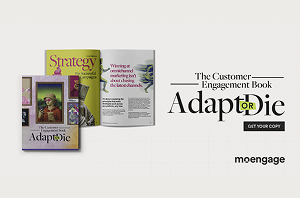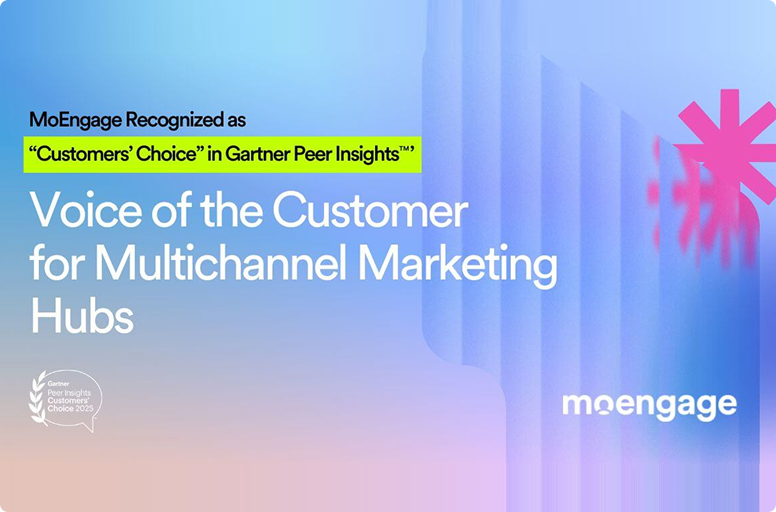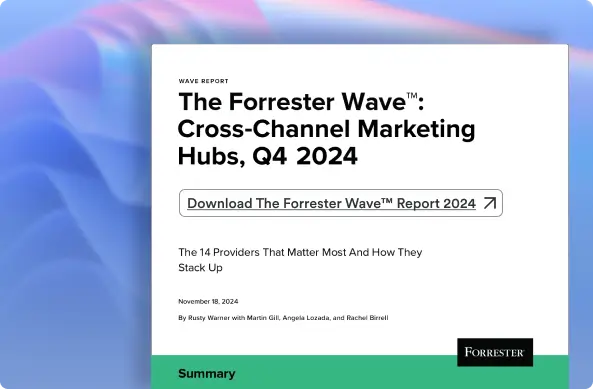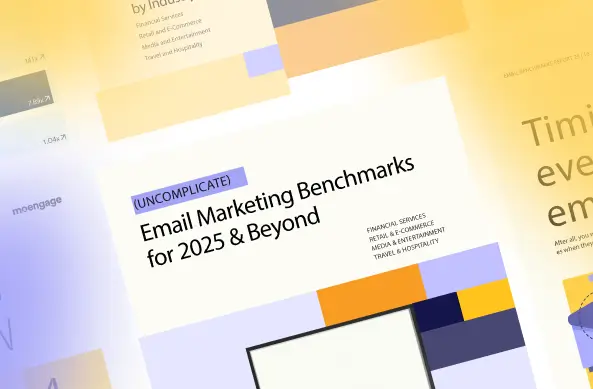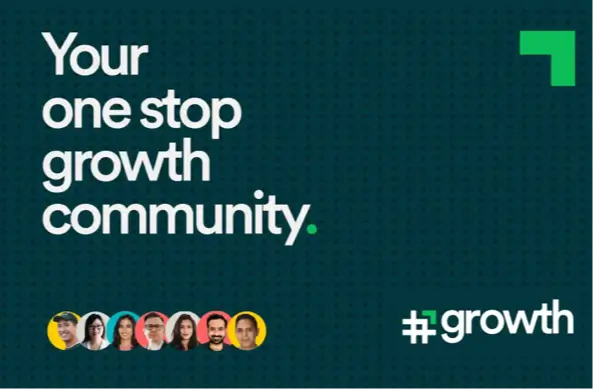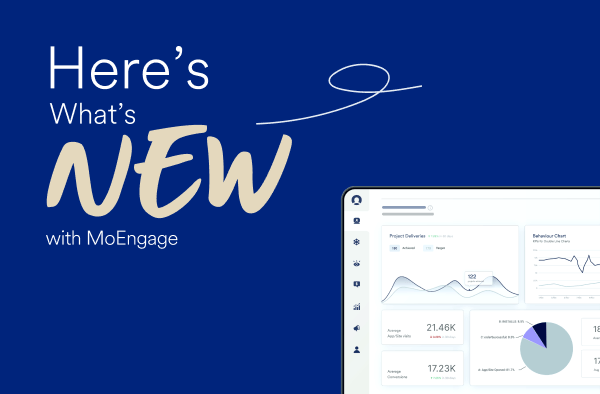How to Build Scalable Products with Ashish Gupta [Marketer Spotlight]
![How to Build Scalable Products with Ashish Gupta [Marketer Spotlight]](https://www.moengage.com/wp-content/uploads/2019/07/3-1.png)
Reading Time: 6 minutes
Editor’s note: Marketer Spotlight is a series of blog interviews focused on sharing insights and best practices from marketing leaders on the various aspects of marketing in a digital world. Ashish Gupta is the CEO of Docprime.com, an online medical service provider and Tech Evangelist at Policybazaar.com, an online insurance portal. In this spotlight interview, Ashish describes what it takes to build scalable products, and the three fallacies product developers should avoid.
MoEngage: What prompted you to build Policybazaar.com and later Docprime.com? Tell us about your journey in building these scalable products.
Ashish: Not many might know that Policybazaar.com’s parent company was Etech Aces Marketing Pvt Ltd. Ten years ago, we never wanted to be what we are today. We wanted to be a marketing company. We wanted to be a business of 20 people working from a room, creating some helpful platforms, and never getting our hands dirty. We wanted to create a lead generation business. We didn’t do bad. The lead generation model was a very low-cost model, the cost of operation was reasonably low, and we were making decent money. Even though the business was doing well, it had not transformed the industry. Insurance sale was never digital. We would forward the leads to the partners, and the partners would pay us for it. We were quite profitable.
However, when we evaluated what we were doing, we were never convinced that we were making a difference to the world or changed the way the game works. What happened was, we gave our partner the digital lead, but the partner would call the lead and ask if they could come home to explain the policy. What they didn’t realize is if the lead wanted the partner to visit their house, he wouldn’t have looked for a digital solution in the first place. From a PNL perspective, the CFO was happy, but the CEO wasn’t. That’s where we started evolving; we scraped the lead generation model and moved to the aggregator model. An aggregator model is a terrible model because it is a number-driven business.
You make money only when you make a sale. From a glamorous business, we took a massive downturn and became a brick and mortar kind of a business, which was then to take the leads to our centers, call up the customers and convert them and make money only when the partner saw something happening. This was essential because this is where the transformation happened. From that day, which was seven years ago to today, markets have been created. 40% of term insurance in this country today is bought digitally. Seven years ago nobody would have thought of it.

The change in the model must have disrupted the way you function in many ways. How did you manage that aspect?
A lot of product evolution was required for this transformation because it was no longer about providing basic information; it was essential to get all the prices right to the last decimal place. There was a level of accuracy required in transactions. We had to evolve our products quite a bit, and that’s where most companies struggle. We had to transform our functions and work across 50 odd providers and 250+ products. It required infrastructure, testing, and a lot of product automation, not just in terms of the journey but also in testing the product in an automated manner. Those are the technologies we had to build before becoming aggregators. Then we started showing price; you could select a product compare and move ahead.
However, we could not control the customer experience. The world was going mobile, but most of the insurance websites would not even open in mobile. Then we decided that being an aggregator is not enough. If we need to evolve, we need to get to the next stage, which is to be an end-to-end provider. We can’t have the consumer having different experiences across providers. We had to take the next step of evolution, which is to do end-to-end. One of the crucial things for us was to ensure that the customer never leaves the Policybazaar.com site to finish a transaction. We had to integrate with each insurer’s system while considering the massive security concerns. It took us almost 1.5 years to get it right, but the result was different from other providers.
How did you conceptualize a company like Docprime.com?
Policybazaar.com worked well as customers could compare plans and move ahead. There were no disruptions in experiences. Then we asked ourselves what next? We thought we should be supporting people after they buy a policy. That’s how the concept of Docprime.com came into being. For our health vertical, we provided state-of-the-art services to a person who purchased a policy. If you look at each of these stages, you will find that we evolved our models every two to three years, and none of this evolution was based on a failure. At each of these stages, we met our plans, investors were happy, business was good, yet we kept on treating ourselves as an underdog and pushed ourselves to do more. That’s the advice I would give the product developers – do not worry about where you were and where you are today, worry every day about being a percentage better than the last day and evaluate yourself as to where you can go from here.

What are the pitfalls that product developers should avoid?

- The first I most often come across is intellectual property. Why I say this a fallacy is because you need to be clear on where you are building intellectual property and where you aren’t. For Policybazaar.com, the end-to-end is intellectual property because it has never been done before even globally in term life insurance. A payment gateway isn’t intellectual property. As product guys, we try and re-invent the wheel just because we want to differentiate ourselves. When you say intellectual property, you have to ensure that this has never been done before and it’s going to be far better than anything that exists. Don’t tweak things; don’t make them slightly better. Unless it is a dramatic change that is specific to your domain, it is not intellectual property. Technically, if you can’t file a patent, it is not intellectual property. So don’t fool yourselves and don’t re-invent everything that is in front of you. Focus on what you need to re-invent. Building the new idea or conceptualizing is easy, but testing it by pushing it in the market and making iterations is a tough job.
- The other most abused product business word is market share. In a startup, this term does not matter because a startup is meant to evolve an industry and take it to the next level. If you look globally, any startup that has done well has not acquired market share, but it has created a market. For example, Uber has not gained the market share of the taxi market in the country. It has created a market that did not exist. The point is that you create a market, do not fight for a share. It will force you to innovate and do things better.
- The third one is domain knowledge and experience. In a startup environment, these are positive words that look good on a resume. When we started evolving the Docprime.com team, the concept of domain knowledge did not exist. When we interviewed people from similar industries, we found that their ideas were so rigid that if they came in, we would have ended up doing what has already been done, which was not our intent. We have five product manager, but none of them have product experience. All of them come from analytics experience; not one has built a product ever in their life. I know, it is an extreme example. However, what I want to convey here is if you are a product guy, don’t get stuck on what you already know before because that will not change the market. It can be very detrimental. It is critical to evolve every 2-3 years as individuals and as product guys. Make sure that you are building new skill sets. Utilize what you have learned in the past but only with a pinch of salt.
Thank you, Ashish, for taking out time and sharing your incredible journey of building scalable products and for educating us on the fallacies we must avoid. We hope to connect with another marketer and touch upon a different aspect of marketing in the next feature.
Is there someone you’d like us to feature? What topics would you like us to cover in the Marketer Spotlight series? We invite your recommendations and feedback via the Comments section below.

